 Ballerinas anywhere but onstage
Ballerinas anywhere but onstage
 Top 10 safest airlines in the world
Top 10 safest airlines in the world
 Top 10 most popular instant messaging apps in the world
Top 10 most popular instant messaging apps in the world
 Inspiring shadow images of Chinese army
Inspiring shadow images of Chinese army
 Models shine Xinjiang auto show
Models shine Xinjiang auto show
 From laid-off worker to int'l referee in bodybuilding
From laid-off worker to int'l referee in bodybuilding
 Selected photos of 'two sessions'
Selected photos of 'two sessions'
 Most unusual taxis around the world
Most unusual taxis around the world
 Bridge Worship Festival in Taijiang, SW China
Bridge Worship Festival in Taijiang, SW China
Located in the Guanzhong Basin, in the middle of the Yellow River Basin, and at the center of Chinese geographic territory, Xi'an is the New Eurasian Land Bridge's biggest central city in China's territory of and the bridgehead of China's West Development.
Xi'an is the provincial capital of Shaanxi Province, a world famous historic and cultural city, and a key scientific research, higher education, national defense science and technology, and high-tech industrial base in China. Governing 9 districts and 4 counties, Xi'an now has a total area of 10108 km2, of which the planning area of the central city is 490 km2 and the built-up area is 415 km2. The permanent resident population in the whole city is 8.5134 million while the total registered population is 7.9183 million. There have been 300 blue-sky days each year in Xi'an for successive 5 years. In 2012, SO2, biochemical oxygen demand, ammonia nitrogen, and nitrogen oxide emission decreased by 2.35%, 2.14%, 2.21% and 0.8%, respectively, and there were 306 days rated as excellent days in terms of air quality, a record high in history. Xi'an won such titles as a "National Sanitary City," a "National Garden City," one of "China's Excellent Tourism Cities," one of the "Cities with the Best International Image," one of "China's Happiest Cities," one of "China's Top 10 Cities with Soft Power," one of the "National Top 10 Innovative Cities," and one of "2012 China's Top 10 Featured Leisure Cities."
Xi'an was known as the center of Chang'an in history, with more than 3100 years' history as a city and more than 1100 years' history as a capital. In succession, 13 dynasties founded their capital here. Xi'an once enjoyed a good reputation in the world, which can be attested to by the old saying that "There to the east of Rome lies Chang'an." Here is the birthplace of Chinese civilization, and the beginning of the Silk Road.
Xi'an can be regarded as the natural museum of the history of ancient Chinese society. There are 282 key cultural and relic sites, of which 34 are protected at the national level and 51 at the provincial level. There are more than 120,000 cultural relics stored in the museums and libraries. Among the historical and cultural heritage of humankind here deemed very precious are the Terracotta Army, (popularly known as the Eighth Miracle of the World), Tang & Ming City Wall of Xi'an (the ancient city wall in the world to be most perfectly preserved and boast the largest scale), and the Four Major Archaeological Sites (Zhou Feng Gao, Epang Palace of the Qing Dynasty, Chang'an City of the Han Dynasty, and Daming Palace of the Tang Dynasty).
In 2005, Xi'an launched the "Imperial City Renaissance Plan." According to the historical and cultural contents of the Tang Dynasty imperial city of Xi'an and related economic and social forms, and by combining commerce, technology, and tourism, Xi'an would protect and recover traditional streets and districts, carry our urban renewal, restore the style of the ancient historical and cultural capital, and reproduce the prosperity of the Tang Dynasty in its heyday. In this planning, the urban spatial development structure is divided into a central development zone, an urban tourist service zone, an urban function development zone, and an urban entry zone. In this way, ancient and modern civilization merge to add radiance and beauty to each other, while the old and new districts demonstrate their elegant demeanor. Xi'an presents its glamor to the world as one of its cultural capitals.
Being one of the famous international tourist cities, Xi'an has 80 tourism resources of the 109 tourism resources found in Chinese tourism resource censuses. In addition to its unique cultural landscape, there are beautiful natural styles and features. Scenic spots such as Mount Hua, the Zhongnan Mountains, Mount Taibai, Mount Li, Louguan Pavilion, and Cuihua Mountain are of infinite scenery. There are 11 forest parks. In 2012, Xi'an speeded up the construction of 8 national-level service industry comprehensive revolution pilot reform accumulation areas. The value added of service industry in the whole city was RMB227.999 billion, accounting for 52.2% of the GDP, with an increase of 12.2%. A batch of key tourist projects including Xi'an Louguan Chinese Taoism Culture Exhibition Area, Expo Park, and Tang Huaqing Mall. In the whole year, Xi'an received 1.15 million foreign tourists and 78.63 million domestic tourists, an increase of 15% and of 20%, respectively. The total income of the tourism was RMB65.44 billion, an increase of 23.4%.
 Female journalists at 'two sessions'
Female journalists at 'two sessions' Interpreters serving 'two sessions'
Interpreters serving 'two sessions'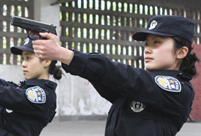 Female SWAT team in Chongqing
Female SWAT team in Chongqing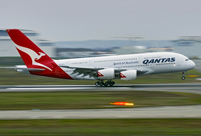 Top 10 safest airlines in the world
Top 10 safest airlines in the world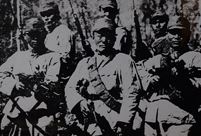 Old photos of Anti-Japanese War
Old photos of Anti-Japanese War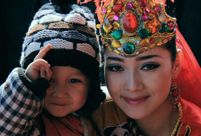 Mysterious 'Dolan Tribe' in Xinjiang
Mysterious 'Dolan Tribe' in Xinjiang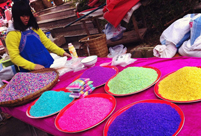 A bite of Luoping County
A bite of Luoping County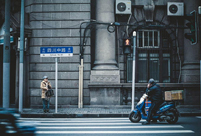 This is Shanghai
This is Shanghai Chinese airborne troops complete parachute training in various training bases
Chinese airborne troops complete parachute training in various training bases Ballerinas anywhere but onstage
Ballerinas anywhere but onstage Most unusual taxis around the world
Most unusual taxis around the world Micro-expression at 'two sessions'
Micro-expression at 'two sessions' Bridge Worship Festival in Taijiang, SW China
Bridge Worship Festival in Taijiang, SW China Hollywood documentary brings Diaoyu Islands truth to new audience
Hollywood documentary brings Diaoyu Islands truth to new audience Miss HK and actresses shine at flower show
Miss HK and actresses shine at flower showDay|Week|Month